
Für eine deutsche Übersetzung dieser Seite einfach die Brandenburger Flagge anklicken
 |
Click the Brandenburg Flag for a German translation Für eine deutsche Übersetzung dieser Seite einfach die Brandenburger Flagge anklicken |


|
|
EarthA collection of pictures of our home planet,
|
|


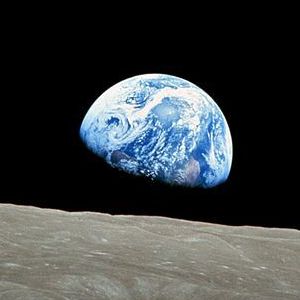 |
The "Eartrise" picture taken by the crew of Apollo 8 at Christmas Day 1968 is one of the most
iconic pictures of our home planet. It is widely considered the most influential environmental photograph ever. Over the years, a number of pictures of Earth from lunar orbit have been taken by Apollo crews and by automatic probes. "Earth Rise" pictures like those photographed by unmanned Soviet Zond crafts and manned US Apollo missions can only be taken from an orbit around the Moon, but not from its surface. Because of its synchronous rotation, Earth does not appear to rise or set. Instead one would always see Earth hanging in the lunar sky, going through various phases, as the Moon does seen from Earth. |


|
The very first picture of an earth rise was taken by the American Probe
Lunar Orbiter 1 on August 23, 1966. The first humans to see the Earth from the moon were Frank Borman, Jim Lovell, and Bill Anders on Board of Apollo 8. The crew took a number of pictures of the Earth, including the the iconic Earth Rise picture shown further above. Another picture, showing the entire Earth above the lunar surface was taken by the Soviet probe Zond 7 on August 11, 1969. Among all the pictures taken by Apollo crews, there is one that stands out: On November 24, 1969 just 3 hours and 45 minutes before re-entry, the crew of Apollo 12 observed a solar eclipse with the Sun being eclipsed behind the bright rim of the otherwise dark Earth. |


|
Lunar Orbiter 1 Source: Historical Planet  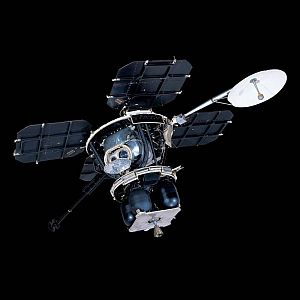
|
Zond 7 Source: collectspace.com  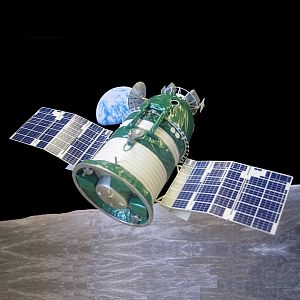
|
Apollo 12 in Lunar Orbit Source: West Chester Technology Blog  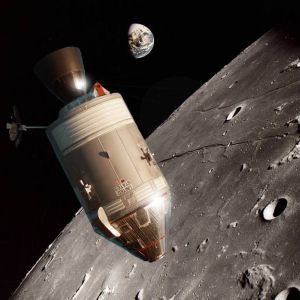
|

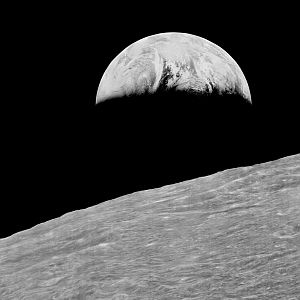  The first Earth rise picture Lunar Orbiter 1, August 23, 1966 Source: moonviews.com |
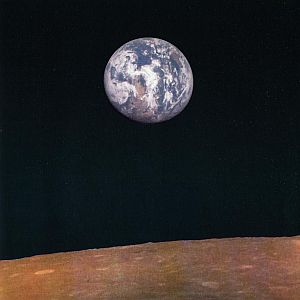  Full Earth Earth Rise Zond 7, August 11, 1969 Source: Spacewatching |
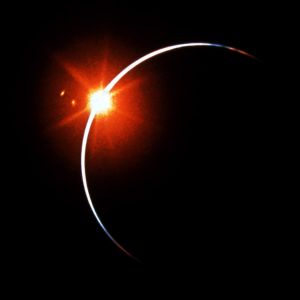  Solar Eclipse Apollo 12, November 24, 1969 Source: Don Davis |


|
The last Apollo mission took a picture of earth that became known as the "Blue Marble." Note the exposed
Scientific Instrument Module in the picture
of the Apollo 17 Command and Service Modules (CSM) photographed from the Lunar Module. In later years, moon satellites with high resolution cameras took some impressive pictures like the ones shown below, taken by Japan's Kaguya spacecraft and by NASA's Lunar Reconnaissance Orbiter. |


|
Apollo 17 CSM Source: Lunar & Planetary Institute  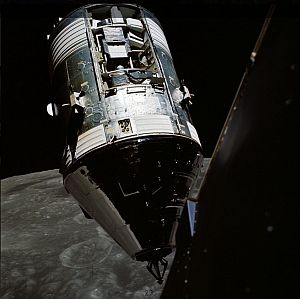
|
Kaguya-Selene Source: JAXA / Planetary Society  
|
Lunar Reconnaissance Orbiter Source: NASA  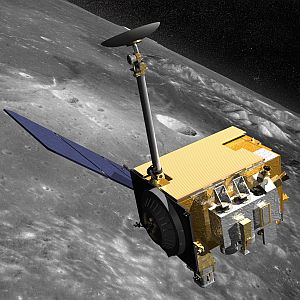
|

  Blue Marble Apollo 17, December 7, 1972. Source: Wikipedia |
  Earth Set Kaguya, January 2008 Source: planetary.org |
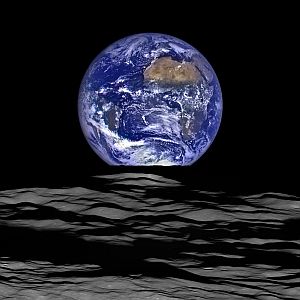  Composit image of Earthrise Lunar Reconnaissance Orbiter, 2009 Source: nationalgeographic.co.uk |


|
Far side of the Moon On June 18, 2009, NASA launched the Lunar Reconnaissance Orbiter, a spacecraft essential for the preparation of NASA's future Moon missions - human and robotic. Among the high resolution pictures, the LRO has provided is one showing the sun lit far side of the moon in front of the also sunlit southwestern hemisphere of Earth. |
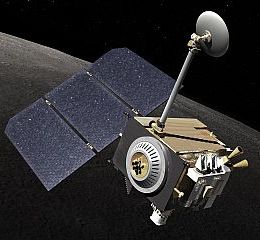 |

|


Pictures from Further Away |

|
In the last 50 years, automatic space probes have visited every planet in our solar system and have orbited seven of them. At some point of their
journey, some of them pointed their cameras back to where they came from and took distant pictures of the Earth. The furthest image of the Earth was taken on February 14, 1990, before Voyager 1 left the solar system and before its cameras were turned off to preserve power. The last picture of our home planet was taken from the unimaginable distance of 6,054,587,000 kilometers (3,762,146,000 miles). |
 Source:Wikipedia
Source:Wikipedia
|


|
|
Click here to fly back to Earth orbit | Click here to see the Earth from far, far away |
|

|
Back to Solar System Page |
Back to Space Page |
Back to English Main Page |
 Back to Start Page |